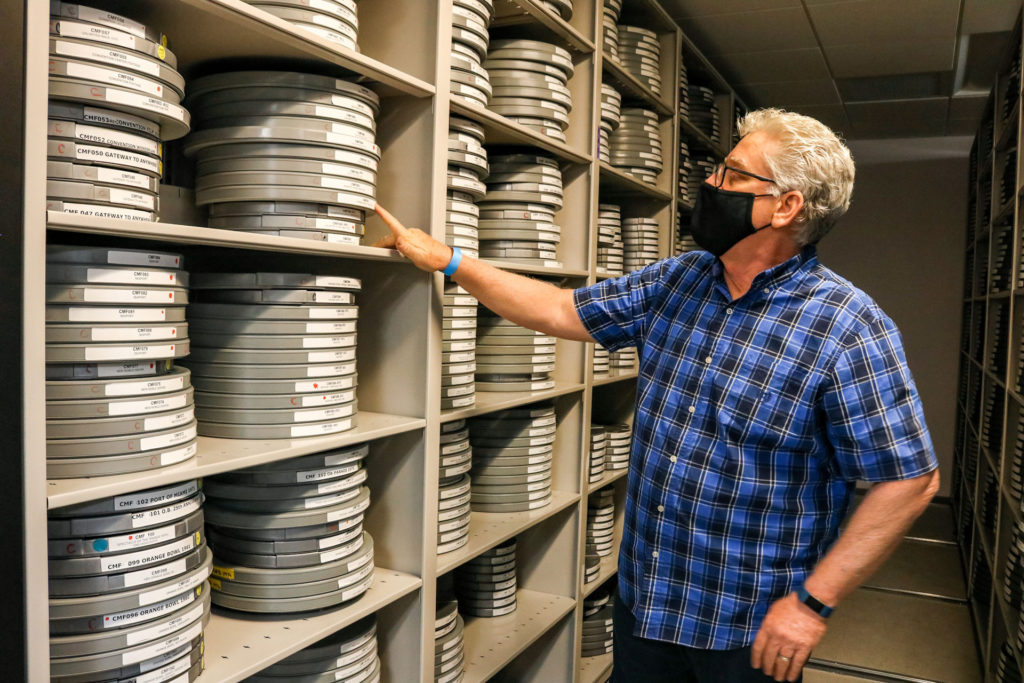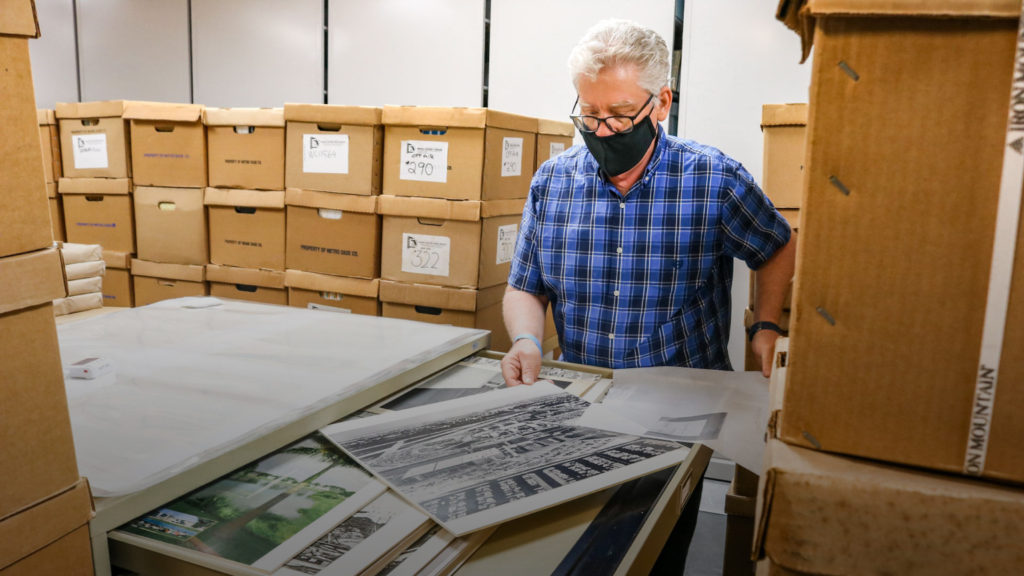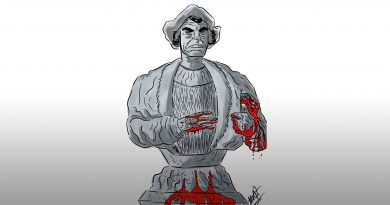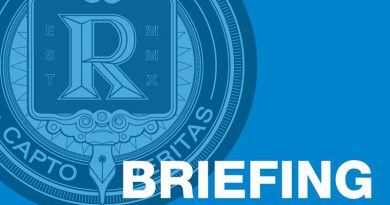Wolfson Archives Preserves South Florida’s History One Image At A Time
Rene Ramos is stuck in the past.
As director of the Miami Dade College Archives Department, Ramos spends his days inside the College’s personal time capsule—the Lynn and Louis Wolfson II Florida Moving Image Archives, located at Wolfson Campus on the fourth floor of building 8.
The Wolfson Archives features more than 35,000 hours of videotape and 23 million feet of film documenting South Florida’s history. The footage includes iconic moments in Miami’s history: from Jimmy Carter speaking at North Campus when he was a presidential candidate in 1976 to legendary boxer Muhammad Ali visiting the College in 1986.
“This is a place that helps us remember how things were like and how we got to where we are now,” Ramos said.
Those who visit the archives are greeted by 150 feet of black and white wallpaper that creates a photo collage with photos from the 1900s to the early 2000s.
The montage includes images of the Overseas Railroad built by Henry Flagler to enter Key West, acclaimed newsman Ralph Renick interviewing Fidel Castro during the Cuban Revolution, The Beatles departing Miami International Airport after visiting Miami for the first time in 1964, and former MDC President Eduardo J. Padrón with Barack Obama in 2003 when the then Illinois senator visited the Miami Book Fair after publishing his first memoir, Dreams From My Father.
“The archives is a dynamic record of South Florida history for the last century,” said Kevin Wynn, the archives’ public programs coordinator. “When people come to visit or read our materials, they leave with a clearer image of Florida development along with its trends and historical movements.”
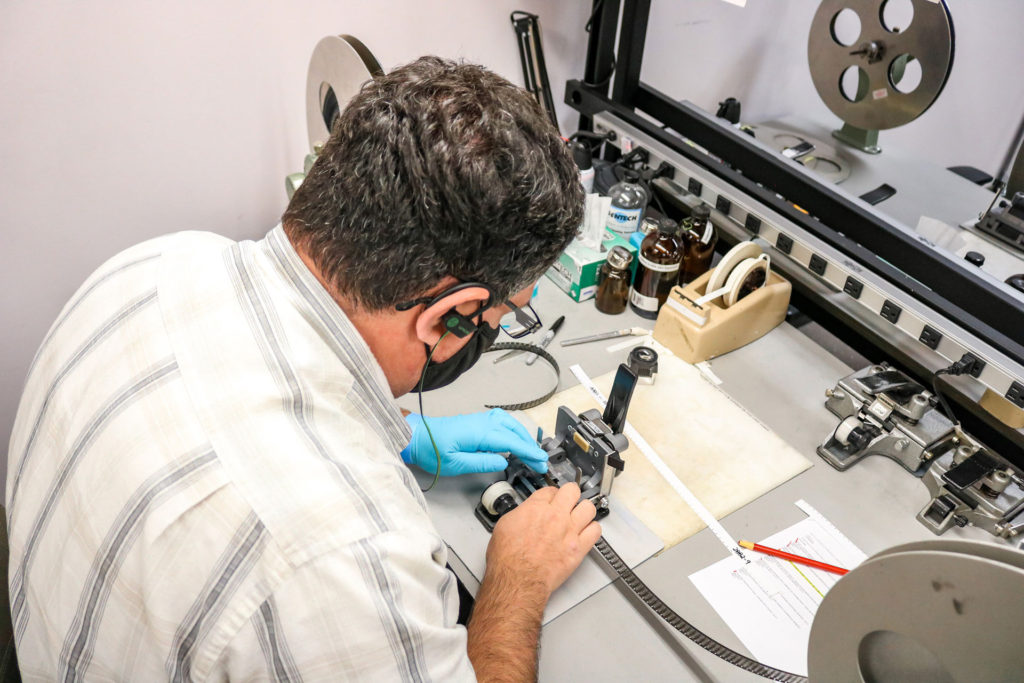
Formed in 1984, the archives get their name from their main benefactors—philanthropist Lynn Wolfson and her husband Louis Wolfson II. Other founders included local historian Arva Moore Parks and Renick, a pioneering news anchor at Miami’s WTVJ.
The collection was previously housed in the basement of the Miami-Dade Public Library System’s Main Branch. In 2009, it moved into MDC: a 9,000-square-foot space that includes a humidity-resistant room that is kept at 60 °F to properly preserve the items.
“It’s useful to know what happened in the past. Without that background of history, we’d just be wandering around. We wouldn’t know the roots of things,” Ramos said. “With history, you can always come up with an explanation on why things are the way they are.”
A good portion of the material in the archives was donated by families that don’t have the equipment to watch old formats like films or VHS tapes.
Recent donations include homemade video tapes. Most of the footage is silent and was shot between the 1910s and 1920s. They include family vacations, birthday parties and tourist sites.
“Sometimes [the donations] don’t add up too much because you’re just looking at a stranger at a birthday party in the 1950s,” Ramos said. “But when you start adding them together and you actually look at them in detail, you start to get the sense of how people used to wear their hair back then, what clothes they would wear or what cars they drove and it becomes something special.”
The archives also include footage of news stories, films, videotapes and digital elements of Florida’s first Television station, WJTV (now known as NBC 6). Donations like that often arrive at the archives because TV stations don’t have the energy to digitize them.
Throughout the years, members of the archives have dedicated most of their time to organize the materials they receive. They have a separate entity—the film and television archives—with materials dating back to the early 20th century.
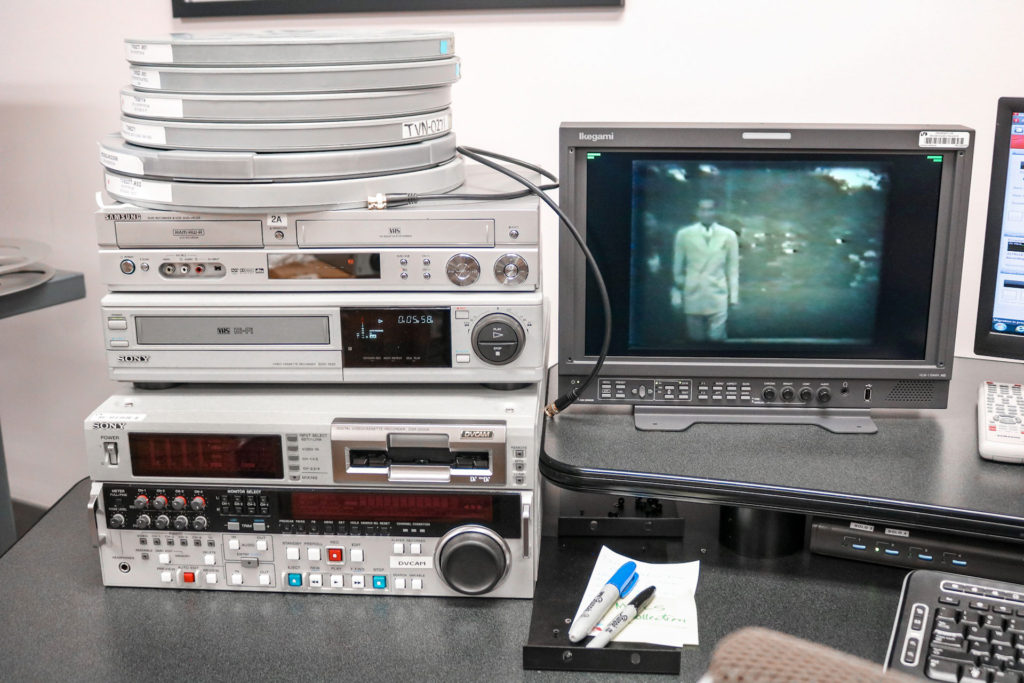
The digitization project started in 2009. The purpose is to make the archives’ material more accessible to the public and to prevent from losing them to disintegration. People who donate to the archives receive a digital copy of their materials in a CD or Dropbox.
All the content in the collection can be found at the Wolfson Archives website. The site allows anyone to use them as a resource for projects, documentaries or reports. Although it is free to download the materials online, they come with a watermark. The archives charge professional filmmakers to use watermarked-free materials in their projects.
“The Wolfson Archives is truly a crown jewel of Miami Dade College,” said Wolfson Campus President Beatriz Gonzalez. “…These artifacts support our faculty and students, community stakeholders and content producers, telling compelling stories that help us understand the complex history and relationships that form our unique Florida experience.”
Preparing the material to tell those stories has proven more difficult during the past year due to the coronavirus pandemic. The team tried to take the digitization project online, but after holding Zoom and Microsoft Teams meetings, they realized their efforts couldn’t continue without the equipment inside the archives.
So they switched their focus to create a database for backlogged material that was digitized but difficult to find. Now, people can find those items on the database by searching related keywords.
In the future, Ramos hopes to forge partnerships with entities that could feature the archives’ material in art or museum installations so people can become better acquainted with Miami’s history.
“Miami gets a bad reputation [for] not respecting history or not being aware of what was here before,” Ramos said. “It’s important to learn about our city because it helps one [become] rooted into the community.”
